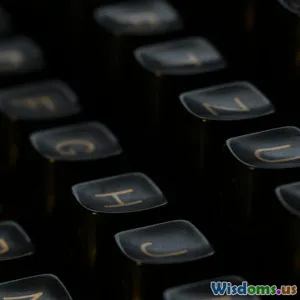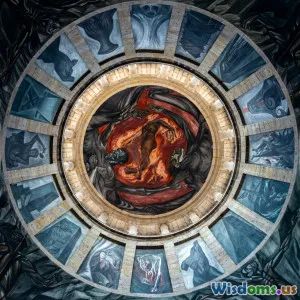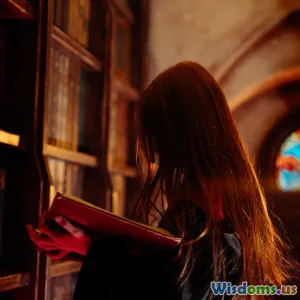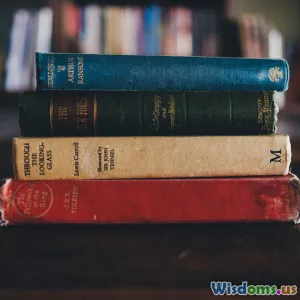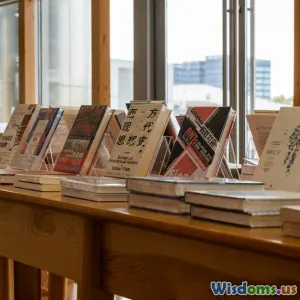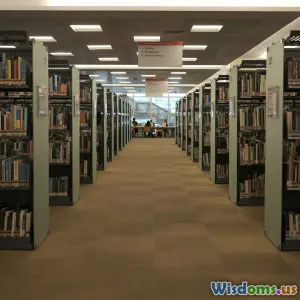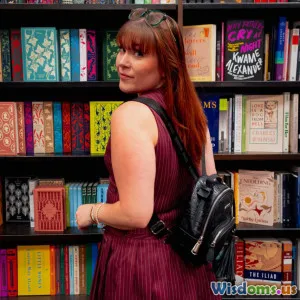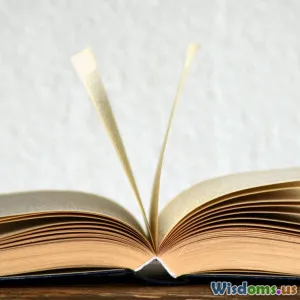
Which Century Saw the Greatest Evolution in World Literature
9 min read Explore which century transformed world literature most profoundly through groundbreaking works and movements. (0 Reviews)
Which Century Saw the Greatest Evolution in World Literature?
The evolution of world literature is a journey through time that charts the unfolding of human imagination, culture, and expression. But if one were to pinpoint a single century that catalyzed the greatest literary transformation, which era would it be? Was it the Renaissance's explosion of classical rediscovery? The 19th century’s prolific birth of novels and realism? Or the 20th century’s bold avant-garde experimentation?
In this article, we embark on a comprehensive exploration of these pivotal periods. Through detailed analysis of historical contexts, influential authors, notable works, and literary innovations, we seek to unravel which century indeed revolutionized world literature most profoundly.
Introduction: Defining Literary Evolution
Literary evolution isn’t just about volume or quantity of works produced but also the ways literature reflects and reshapes societal paradigms, aesthetic forms, and philosophical inquiries. Evolution encompasses:
- The emergence of new genres and styles
- Technological shifts such as printing impacting dissemination
- Cross-cultural exchanges and global influences
- The rise of the author as an individual creative force
- Changing audiences and their expectations
By assessing these parameters against historical backdrops, the analysis moves beyond subjective preference to an evidence-based understanding.
The Renaissance: Rebirth of Classical Wisdom and Humanism
Reawakening Literary Traditions
The 16th century Renaissance, originating in Italy and spreading across Europe, reintroduced classical Greek and Roman philosophies, arts, and literary ideals after centuries of medieval scholasticism. Literature responded accordingly:
- The works of Dante Alighieri, particularly The Divine Comedy, set a precedent for vernacular storytelling infused with spiritual allegory.
- Petrarch’s humanist poetry revived intimate lyricism.
- Shakespeare (1564-1616) reshaped drama and narrative complexity, blending tragedy and comedy with unprecedented psychological insight.
Printing Press and Accessibility
Gutenberg’s 15th-century printing invention became fully influential in this century, vastly increasing accessibility. The democratization of texts allowed literature to transcend elite courts and clergy, engaging emerging middle-class readers.
These developments positioned the Renaissance as a foundational era, expanding literature’s scope and elevating human-centered themes. Yet, its scope was largely Eurocentric and bounded by classical revivalism.
The 18th Century: The Age of Enlightenment and Satire
Reason and Social Critique
Building on Renaissance humanism, the 18th century embraced Enlightenment ideals, emphasizing reason, science, and individual rights. Literature became a vehicle for satire and social criticism:
- Voltaire’s Candide offered sharp commentary on optimism and societal corruption.
- Jonathan Swift’s Gulliver's Travels critiqued politics and human nature through fantastical allegory.
- The rise of the novel as a dominant literary form — epitomized by authors like Daniel Defoe and Samuel Richardson — reflected individual experience and moral dilemmas.
Expansion of Print Culture
Periodicals, pamphlets, and serialized novels flourished, fostering a vibrant literary marketplace. Literacy rates improved, further diversifying readership.
While transformative, the 18th century’s impact was primarily intellectual and philosophical rather than stylistically revolutionary.
The 19th Century: The Flourishing of the Novel and Realism
Novel as the Crown Jewel
The 19th century arguably witnessed the most prolific and influential growth in world literature, largely due to the ascendancy of the novel. This period saw:
- Charles Dickens embedding social critique within compelling narratives like Oliver Twist.
- Leo Tolstoy’s epic realism* (War and Peace, Anna Karenina) conveying psychological depth alongside historical panoramas.
- Jane Austen’s domestic realism, exploring gender and class with irony and subtlety.
Literary Movements and Diversity
Major movements emerged:
- Romanticism, emphasizing emotion and nature (e.g., William Wordsworth, Victor Hugo)
- Realism and later Naturalism, portraying gritty realities (e.g., Gustave Flaubert, Émile Zola)
- Transcendentalism in America, blending spirituality and individualism (Ralph Waldo Emerson, Henry David Thoreau)
Global Expansion
Colonial literatures began asserting voices, with figures like Rabindranath Tagore opening dialogues between East and West. Technological advances in railway and telegraph accelerated cultural connectivity.
This century’s extraordinary volume, diversity of form, and expanding thematic range laid the groundwork for modern literary culture.
The 20th Century: Avant-Garde, Modernism, and Postmodernism
Breaking Tradition
The 20th century arguably represents the most radical departure from previous literary conventions. By embracing fragmentation, stream-of-consciousness, non-linear storytelling, and existential interrogations, writers redefined literature’s possibilities:
- James Joyce’s Ulysses broke the novel mold with interior monologues and elaborate symbolism.
- T.S. Eliot’s poetry introduced allusive Modernist masterpieces like The Waste Land.
- Virginia Woolf and Marcel Proust pioneered psychological depth and time’s fluidity.
Literature Reflecting Turbulence
Two World Wars, the Great Depression, decolonization, and rapid technological change informed literature’s gravitas and urgency.
- George Orwell and Aldous Huxley explored dystopias reflecting anxieties over political totalitarianism and technological control.
- The Harlem Renaissance showcased African American voices, radically enriching the literary mosaic.
Postmodern Experimentation
Late-century postmodernism rejected grand narratives and authority, fostering metafiction, pastiche, and intertextuality. Writers like Thomas Pynchon, Salman Rushdie, and Margaret Atwood questioned identity and history.
Globalization and Translation
Increased cross-cultural exchanges amplified non-Western literatures, expanding global literary awareness. Nobel Prizes recognized diverse voices, illustrating literary pluralism.
Comparative Insights and Final Thoughts
While the Renaissance reignited classical themes and humanism, the 18th century catalyzed social and philosophical critique, the 19th century created the novel form’s global dominance and widened thematic horizons.
However, the 20th century’s radical formal innovations, thematic breadth grounded in historic upheavals, and inclusion of diversified global perspectives arguably constitute the greatest evolution. The century’s literature mirrors humanity’s fractured yet interconnected modern condition and continues to influence contemporary writers and readers.
Indeed, as literary scholar Joseph Brodsky asserted, “We live by arts and not by laws.” The 20th century transformed how we live through arts—and particularly through literature.
Conclusion: A Century Like No Other
Each century contributed uniquely to literary evolution, but the sweeping transformations in form, style, theme, and global representation during the 20th century cement its place as the unparalleled era of literary progress. This epoch expanded literature from established conventions into exploratory, boundary-defying terrains. The seeds it sowed continue to blossom in digital literature, global narratives, and innovation in the 21st century.
For readers, writers, scholars, and enthusiasts, appreciating this dynamic evolution enriches our understanding of literature’s power to interrogate existence, inspire empathy, and foster human connection across time and cultures.
In embracing this strongest wave of literary evolution, we gain not only a historical perspective but a lens into the future of storytelling and cultural dialogue.
References and Further Reading:
- Damrosch, David. What Is World Literature? Princeton University Press, 2003.
- Eagleton, Terry. Literary Theory: An Introduction. University of Minnesota Press, 1983.
- Bloom, Harold, ed. The Western Canon. Riverhead Books, 1994.
- Said, Edward W. Culture and Imperialism. Vintage, 1993.
This article has explored the centuries that transformed world literature, demonstrating the unparalleled impact of the 20th century on literary innovation and global cultural voices.
Rate the Post
User Reviews
Popular Posts











